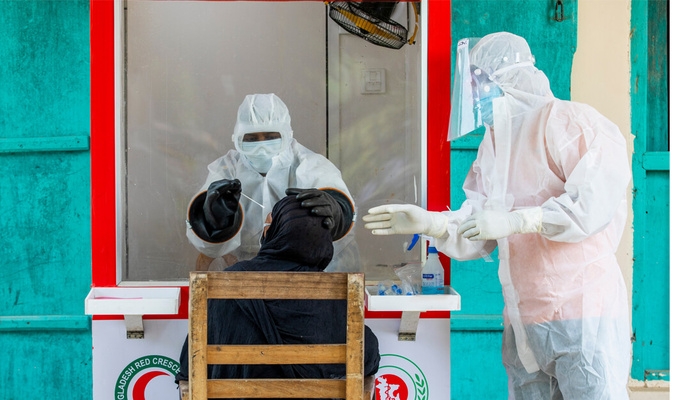

Bangladesh Health Watch and James P Grant School of Public Health are sponsoring quick surveys on the different aspects of Covid19. It is imperative that a quick and small survey is also done on the procedures of collection of clinical samples from the suspected patients, and its problems. At the same time, it should be useful for future reference as to what are the problems faced by the personnel involved with sample collection and sample testing.
The samples in Bangladesh are collected from the nasopharynx and the oropharyng of a suspected patient or interested person by a medical technologist, following specific procedures, i.e. sample collection with a swab stick in a procedurally correct manner, store in a collection tube, preserve in an EPI cold box and transport to the PCR laboratory for testing within 72 hours.
The sample in the PCR laboratory is treated with several chemical solutions that remove substances, such as proteins and fats from the sample, extract only the RNA present in the sample and person’s own DNA, and, if present, the coronavirus RNA.
Samples are tested through an r-T-PCR (real time polymerase chain reaction). Reverse transcription polymerase chain reaction (RT-PCR) is a laboratory technique which uses a reverse transcriptase to convert the viral mRNA into a single stranded DNA (called complementary DNA or cDNA). Next, DNA polymerase is used to convert the single-stranded cDNA into double-stranded DNA. These DNA molecules can now be used as templates for a PCR reaction. Additional short DNA fragments, as primers, are then added that are complementary to specific parts of the transcribed viral DNA. These fragments attach themselves to target sections of the viral DNA if the virus is present in a sample. Some of the added genetic fragments are for building and amplifying specific DNA strands using polymerase chain reaction, while the others are for adding marker labels to the strands, which produce a fluorescence, that signals the presence of the viral RNA.
The mixture is placed in a rT-PCR machine. The machine cycles through temperatures that heat and cool the mixture to trigger specific chemical reactions that create new, identical copies of the target sections of viral DNA. The cycle repeats over and over to continue copying the target sections of viral DNA. Each cycle doubles the previous amount: two copies become four, four copies become eight, and so on. A standard real time rT-PCR setup usually goes through 35 cycles, which means that by the end of the process, around 35 billion new copies of the sections of viral DNA are created from each strand of the virus present in the sample.
Citizen's Voice